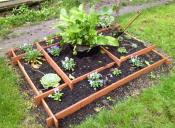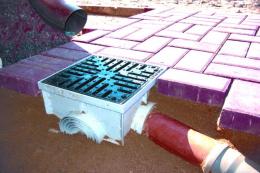Search
Login
Recommended
How to make drainage on the site
Excessive soil moisture often leads to premature destruction of buildings, as well as to a slowdown in the development of shrubs and trees on the site. In addition, excess water can disrupt the functioning of the local sewage system and even disable it. You can prevent these problems if you know how to properly drain.
Content
- When a drainage system is needed (video)
- Types of drainage
- Drainage system design development
- Drainage Care
When a drainage system is needed
The need for the construction of a drainage system arises in many areas in almost all regions of Russia. The reasons for draining the soil can be different:
- the site is located on clay soils;
- the site has a high level of groundwater;
- the site is located on the lower part of the slope, as a result of which a large amount of water is drained along it during melting snow or during heavy rains;
- the site is located on a flat surface, from which water almost does not drain.

If the house has buried parts of the building (for example, a basement), it is necessary to protect them from flooding. In this case, there is no other way out, how to make a drainage at home.

An important element in the design of the site is the laying of the access road. If water begins to accumulate under the coating, the road surface will be damaged if the outside temperature is low. Therefore, it is important to know how to drain the road.
Types of drainage
When draining the site, you can build a closed or open system. Sometimes it is advisable to combine them. There are two ways to implement the drainage of the site: deep drainage and surface drainage. Both the one and the other are designed to remove excess moisture from the land, however, they have completely different devices.
deep drainage
Deep drainage consists of drainage channels that are underground and serve to drain groundwater from the site into drainage wells or reservoirs. The following types of deep drainage are distinguished: vertical, horizontal and combined.
Vertical drainage systems
The basis of the vertical systems of deep drainage are ribbed wells going into the aquifer. Such facilities should be equipped with pumping and filtering stations. Given the complexity of the design and the large investment, they are practically not used in suburban construction.

Horizontal drainage systems
Horizontal deep drainage is quite simple, but its construction requires a certain amount of excavation. Prepared ditches are covered with river or granite gravel, wrapping it in geotextiles (this protects the material from premature siltation). Perforated pipes are placed in the crushed stone layer - drains, which discharge water into the collector, from where it is discharged into a ravine or into a centralized storm system. When laying the drain, it is important to correctly calculate and observe the slopes exactly.
After digging the trenches in which it is planned to install drainage pipes, it is recommended to wait for rain to check the correctness of the project. If the plan is executed correctly, puddles in trenches should not form.
Depending on the soil of the site, drainage pipes are laid to a depth of 0.6 to 1 meter. The diameter of the main pipes should be 100 millimeters, auxiliary - 75 millimeters.
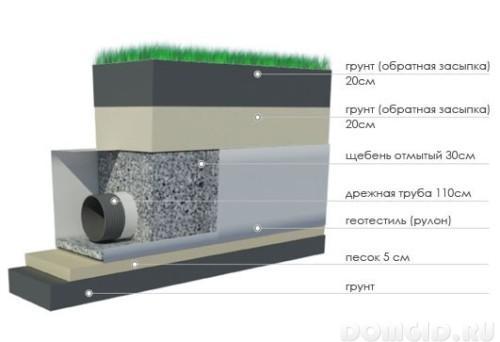
Combined drainage systems
Combined drainage systems are a combination of horizontal and vertical soil drainage.
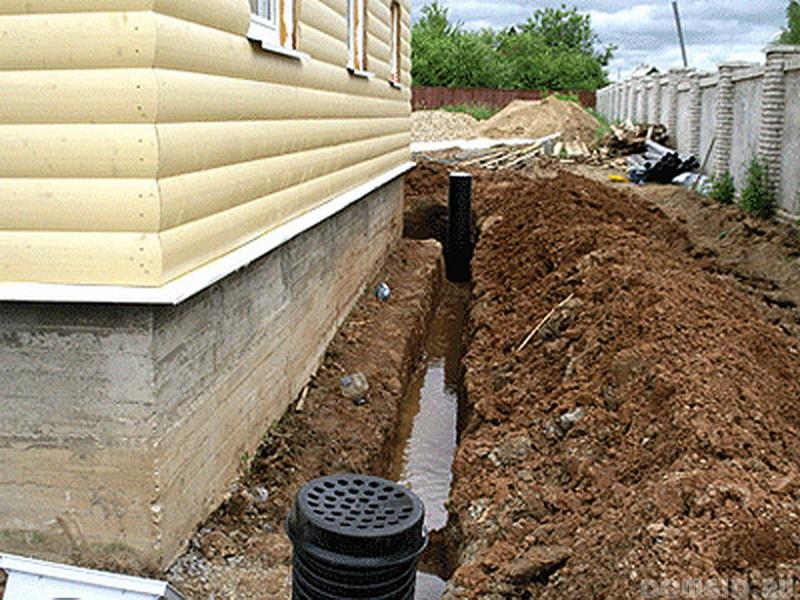
surface drainage
Surface drainage on the site helps to quickly remove rainwater that has accumulated near the tracks or flowing down from the roofs of buildings. Distinguish storm and point surface drainage.
Storm surface drainage
Storm drainage is necessary to prevent the chernozem layer of soil from being washed away from a site located at a slope of more than three degrees, and to protect the foundations of buildings from the action of water as a result of prolonged rains and floods. It is a system of buried gutters, covered from above with removable gratings made of metal or plastic. The gutters are concreted and placed under a certain slope.
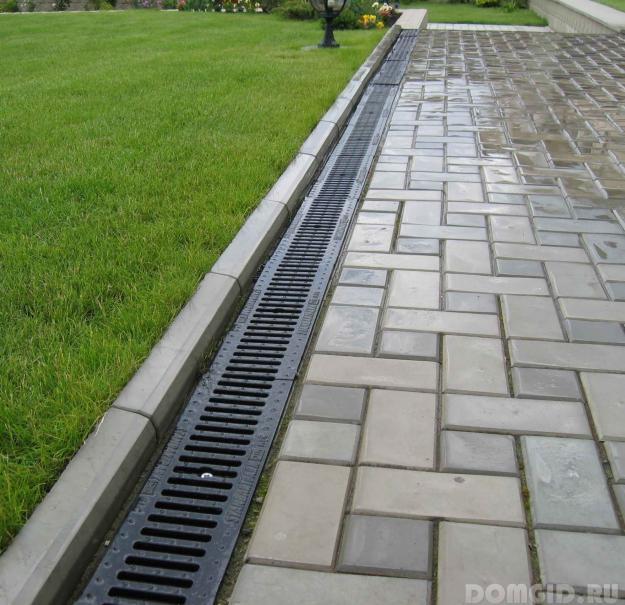
Spot surface drainage
Point drainage is relevant for small, separately located areas. Intakes are installed in certain places where water accumulates periodically - areas under gutters, the lower part of the terrace, natural depressions on the site, entrance and door zones. When designing point surface drainage, its scheme, as a rule, is not developed.

Drainage system design development
Provide for the creation of drainage should be in advance, at the planning stage of the site. The choice of the type of drainage system largely depends on the terrain.
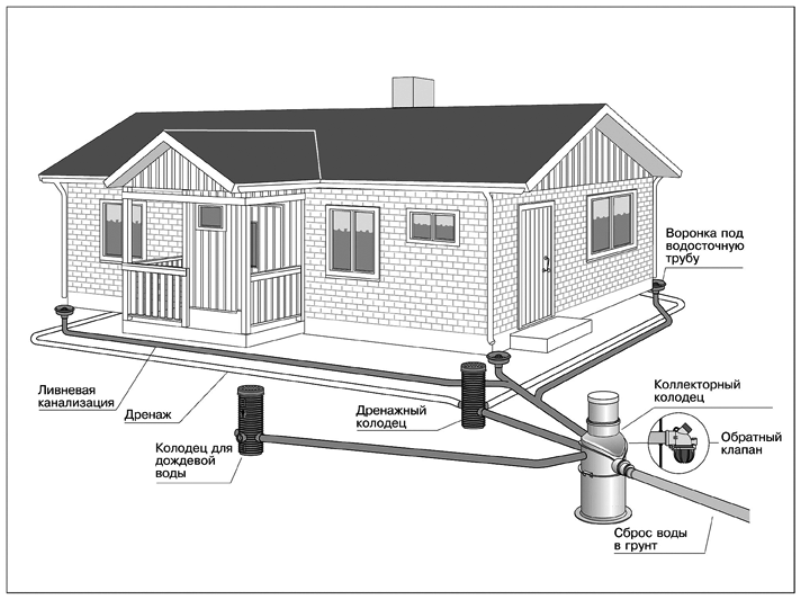
Before laying the drainage system, it is important to correctly plan, determine the location of the sewage well, calculate the amount and cost of the necessary materials. If desired, the project can be prepared independently, without the help of specialists.
To create a project, it is important to thoroughly study the topography of the land using a laser rangefinder and level. If it is impossible to get geodetic instruments, you need to observe the water flows during heavy rain, sketch the flow pattern of drains in the area and, taking into account this information, determine the location of the drainage ditches.
Drainage system care
Periodically, you should look into the drainage wells and clean them as necessary. You can do this yourself using a pump or a stream of water. During operation, drainage wells and outlets are best kept closed so that no debris enters the system.
Once every 10 years it is recommended to carry out a global flushing of pipes. To do this, they must be accessible from both ends. To simplify the maintenance of the drainage of the site, you can install a well at the beginning, at the end, and also at every second turn of the pipe.
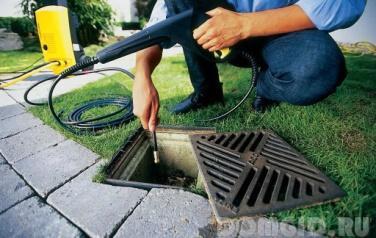
Flushing the pipes is as follows: the pump is connected to the beginning, and then to the end of the drainage pipe and pressurizes water through it.
With proper installation of drainage pipes and observing the rules for servicing the drainage system, it will last more than 50 years. To reduce costs, it is sometimes advisable to cooperate with the owners of neighboring plots and consider such an option as making drainage around the plot. Building a drainage system along the fences will equally lower the water level on both sides. We did a great job, it's time to relax, buying new pajamas in the online store, making strong tea, relaxing in a rocking chair and admiring our work.
